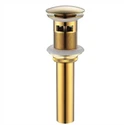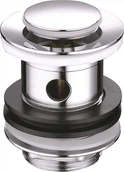The coefficient of friction is a crucial physical property that plays a significant role in various mechanical and engineering applications. When it comes to cup washers, understanding their coefficient of friction is essential for ensuring proper functionality and performance. As a cup washer supplier, I have witnessed firsthand the importance of this parameter in different industries. In this blog, we will delve into what the coefficient of friction of a cup washer is, its influencing factors, and its practical implications.
Understanding the Coefficient of Friction
The coefficient of friction is a dimensionless quantity that represents the ratio of the frictional force between two surfaces in contact to the normal force pressing the surfaces together. It is denoted by the Greek letter μ (mu). There are two main types of coefficients of friction: the static coefficient of friction (μs) and the kinetic coefficient of friction (μk).
The static coefficient of friction applies when the two surfaces are at rest relative to each other and an external force is attempting to initiate motion. It determines the maximum force that can be applied before the surfaces start to slide. On the other hand, the kinetic coefficient of friction comes into play when the surfaces are already in motion relative to each other. Generally, the static coefficient of friction is larger than the kinetic coefficient of friction for the same pair of surfaces.
For a cup washer, the coefficient of friction can have a significant impact on its performance. Cup washers are often used in applications where they need to provide a certain level of resistance to prevent components from loosening or slipping. For example, in a bolted joint, a cup washer can be used to increase the frictional force between the bolt head or nut and the surface it is in contact with, thereby enhancing the clamping force and preventing the joint from coming loose due to vibrations or other external forces.
Factors Influencing the Coefficient of Friction of a Cup Washer
Several factors can influence the coefficient of friction of a cup washer. These factors can be broadly categorized into material - related factors and surface - related factors.
Material Factors
- Material of the Cup Washer: Different materials have different surface properties and atomic structures, which can affect the frictional behavior. For instance, a cup washer made of metal, such as steel or brass, will have a different coefficient of friction compared to a cup washer made of a polymer material. Metals generally have higher coefficients of friction due to their relatively rough surface at the microscopic level and their ability to form strong intermolecular bonds with the mating surface.
- Material of the Mating Surface: The material of the surface that the cup washer is in contact with also plays a crucial role. If the cup washer is in contact with a hard and smooth surface, the coefficient of friction may be lower compared to when it is in contact with a rough or soft surface. For example, a cup washer in contact with a polished stainless - steel surface will have a different coefficient of friction than when it is in contact with a cast iron surface.
Surface Factors
- Surface Roughness: The roughness of the surface of the cup washer and the mating surface is a key factor. A rougher surface will generally have a higher coefficient of friction because the asperities (small bumps and valleys on the surface) can interlock with each other, creating a greater resistance to sliding. However, if the surface is too rough, it may also cause excessive wear and damage to the mating surface.
- Surface Finish: The surface finish of the cup washer, such as whether it is polished, ground, or coated, can affect the coefficient of friction. A polished surface may reduce the coefficient of friction by reducing the contact area between the asperities, while a coated surface can introduce new frictional properties depending on the type of coating. For example, a lubricious coating can significantly reduce the coefficient of friction.
- Lubrication: The presence of a lubricant between the cup washer and the mating surface can have a profound effect on the coefficient of friction. Lubricants can separate the two surfaces, reducing the direct contact and the frictional force. They can also prevent wear and corrosion. However, the type of lubricant, its viscosity, and the amount applied can all influence the effectiveness of the lubrication and the resulting coefficient of friction.
Measuring the Coefficient of Friction of a Cup Washer
Measuring the coefficient of friction of a cup washer typically involves conducting friction tests. One common method is the inclined - plane test. In this test, the cup washer is placed on an inclined plane, and the angle of the plane is gradually increased until the cup washer starts to slide. The tangent of this angle at the point of incipient motion is equal to the static coefficient of friction.


Another method is the use of a tribometer, which is a device specifically designed to measure friction and wear. A tribometer can apply a known normal force to the cup washer in contact with a mating surface and measure the frictional force as the surfaces are either stationary or in relative motion. This method allows for more accurate and controlled measurements, and it can also be used to study the effect of different factors such as load, speed, and temperature on the coefficient of friction.
Practical Implications of the Coefficient of Friction in Cup Washer Applications
The coefficient of friction of a cup washer has several practical implications in different applications.
In Bolted Joints
As mentioned earlier, in bolted joints, the coefficient of friction of the cup washer can affect the clamping force. A higher coefficient of friction means that a greater frictional force can be generated between the bolt head or nut and the surface, which helps to maintain the clamping force over time. This is especially important in applications where the joint is subjected to dynamic loads, such as in automotive engines or machinery. A cup washer with an appropriate coefficient of friction can prevent the bolts from loosening, reducing the risk of component failure and improving the overall reliability of the system.
In Assembly and Disassembly
The coefficient of friction also affects the ease of assembly and disassembly of components. If the coefficient of friction is too high, it may be difficult to install or remove the cup washer, which can increase the assembly time and labor costs. On the other hand, if the coefficient of friction is too low, the cup washer may not provide the necessary resistance, leading to components becoming loose during operation.
Applications in the Glass Rinser Industry
In the glass rinser industry, cup washers can also play an important role. For example, in a Glass Rinser In Matte Black, cup washers can be used in the assembly of various components. They can help to ensure that the different parts of the glass rinser are securely held together, preventing any leakage or malfunction. The coefficient of friction of these cup washers needs to be carefully considered to ensure proper operation.
Similarly, in a Rinser Glass, cup washers can be used in the mounting of the glass - rinsing mechanism. A cup washer with the right coefficient of friction can provide the necessary stability and prevent the mechanism from moving or vibrating during the rinsing process.
In the maintenance of glass rinsers, cup washers can also be involved. For example, in a Cleaning Rinser, cup washers may be used in the disassembly and reassembly of components. Understanding the coefficient of friction of these cup washers can help in ensuring that the cleaning process is carried out smoothly and that the components are properly reassembled.
Conclusion
In conclusion, the coefficient of friction of a cup washer is a critical parameter that can significantly affect its performance in various applications. As a cup washer supplier, we understand the importance of providing cup washers with the appropriate coefficient of friction to meet the specific needs of our customers. By carefully considering the material, surface finish, and other factors that influence the coefficient of friction, we can ensure that our cup washers provide reliable and effective solutions.
If you are in need of cup washers for your specific application and want to discuss the requirements regarding the coefficient of friction, please feel free to contact us for procurement and further discussions. We are committed to providing high - quality cup washers that meet your exact needs.
References
- Bowden, F. P., & Tabor, D. (1950). The Friction and Lubrication of Solids. Oxford University Press.
- Holms, R. A. (1980). Handbook of Friction During Metal Forming. Marcel Dekker.
- Rabinowicz, E. (1995). Friction and Wear of Materials (2nd ed.). Wiley - Interscience.






